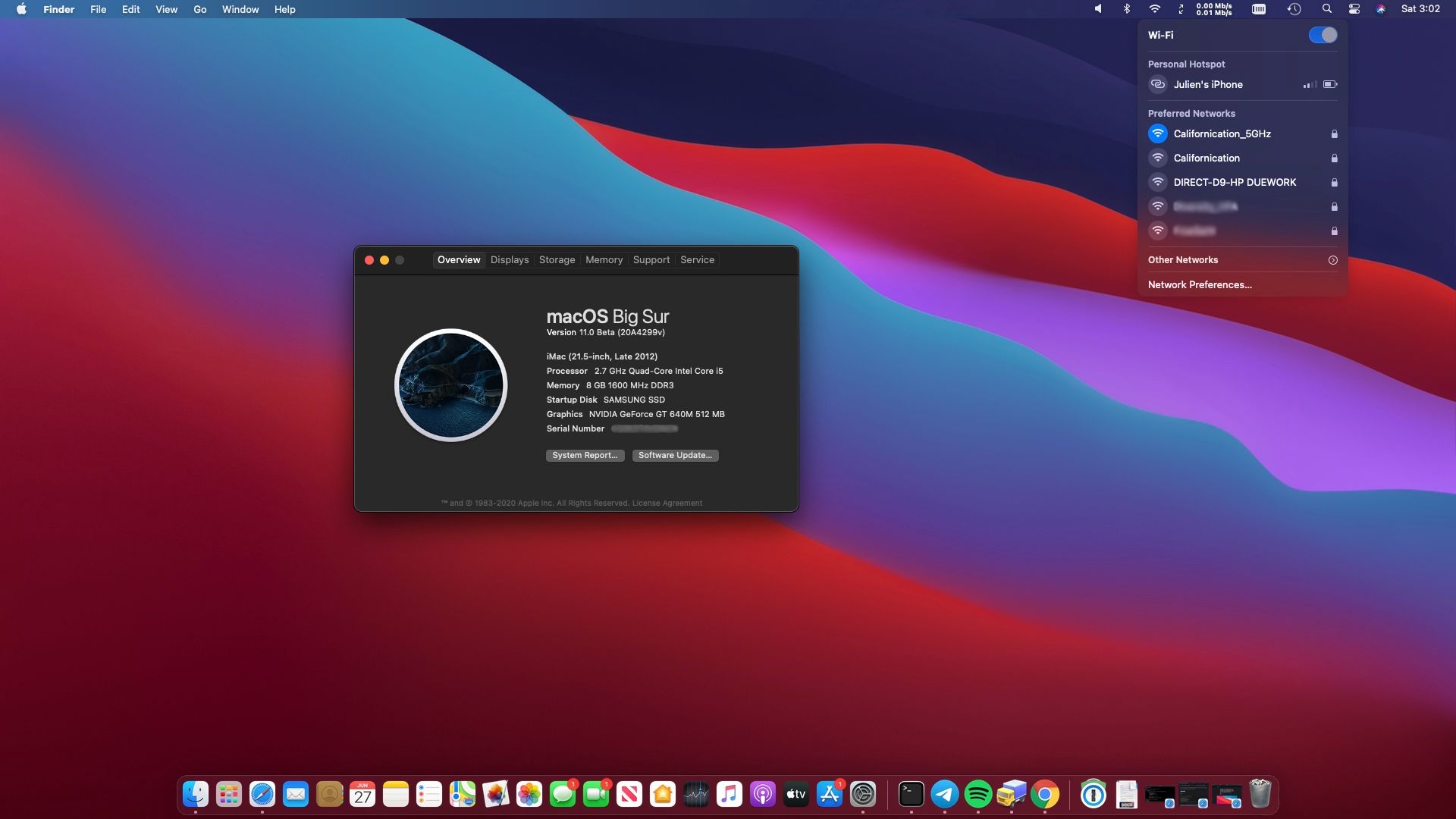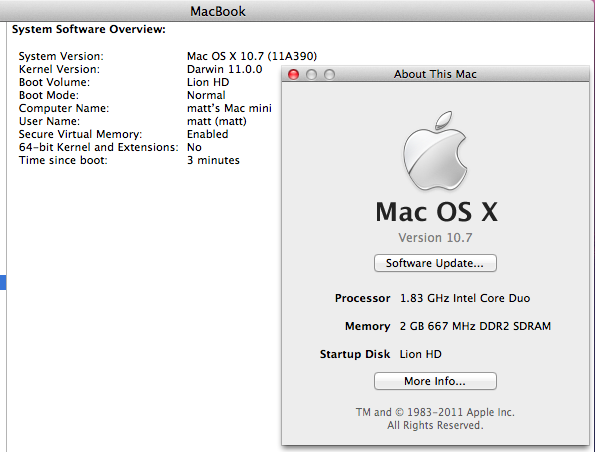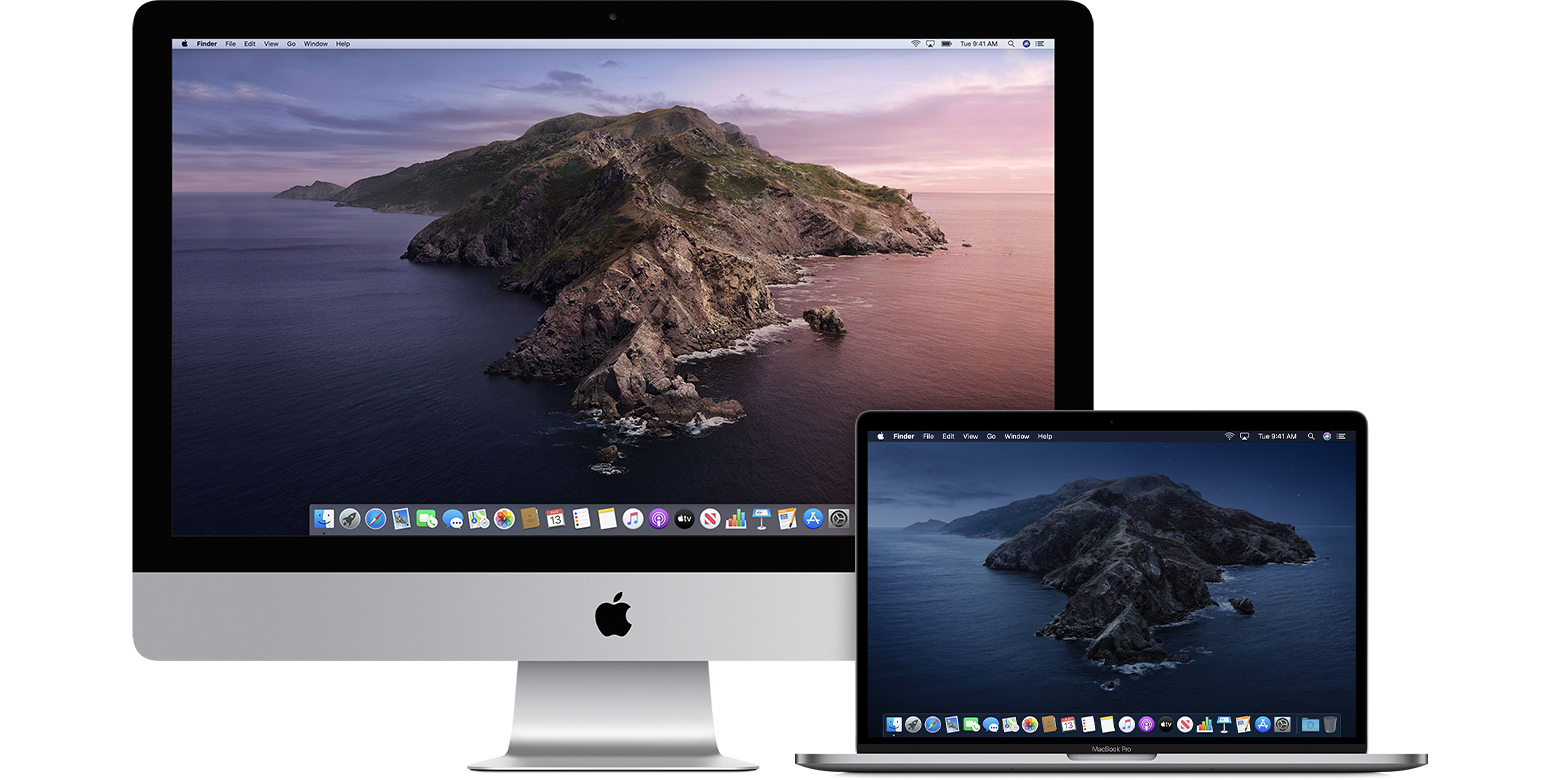MacOS Big Sur 11.0 and later allows management of legacy system extensions for both Intel-based Mac computers and Mac computers with Apple silicon. How to manage legacy system extensions Kernel extensions that use previously deprecated and unsupported KPIs no longer load by default. (The Host Mac will do the work and the Target Mac is the Mac you need to Restore) 1. USB-C Mac as the Host Machine. The Host Mac must have at least macOS 10.15.6 and Apple Configurator 2.13.1 or newer installed. (Version 2.13.2 is the latest as of 11/18/20) 3. DosDude Catalina Patcher is a popular third-party tool that allows users to patch the MacOS Catalina installer on otherwise unsupported Macs. Of course, just because you can do this, doesn't mean.
- Install Macos Mojave On Unsupported Mac
- Mac Os X Install Disk
- Mac Os Catalina Download
- How To Install Unsupported Mac Os A1181
Microsoft word mac 64 bit. Existing Office 2016 for Mac customers will be seamlessly upgraded to 64-bit versions of Word, Excel, PowerPoint, Outlook, and OneNote as part of the August product release (version 15.25). This affects customers of all license types: Retail, Office 365 Consumer, Office 365 Commercial, and Volume License installations. Office Suite Software 2021 Microsoft Word 2019 2020 2016 2013 2010 2007 365 Compatible CD Powered by Apache OpenOffice for PC Windows 10 8.1 8 7 Vista XP 32 64 Bit & Mac OS X - No Yearly Subscription. Microsoft Word Free Download for Mac: Microsoft Word Free Download for Mac is available here for your Mac system. It is very essential for any Windows, Mac users. Microsoft Word is a big cash cow, so it does not give you the privilege where you may enjoy options like free download MS Office for Mac and continue using it forever.
Install macOS Big Sur on unsupported Mac: Some common errors and their fix. Step 1: Create a Backup. Step 2: Download Big Sur Patcher File. Step 3: Open the macOS Big Sur Patcher file. Step 4: Insert USB Drive. Step 5: Install macOS Bir Sur on Unsupported Mac. Update 2019-05-02: For those of you who want to install macOS 10.14 on an unsupported Mac, check this post. I have a MacBook Mid 2007 (more technically named MacBook2,1) that officially can not be upgraded beyond Mac OS X 10.7 (Lion). It is however possible to install Mac OS X 10.9 (Mavericks) on it with quite good success and not too much effort. To install macOS Big Sur on an unsupported Mac we must do it on a disk partition and from macOS Catalina. This way if something goes wrong, we can always continue using our Mac as if nothing else. To make a partition follow these steps: Click on the magnifying glass and look for the app Disk utility. Up click on Create partition. Click on the Force Cache Rebuild option and click Restart. By this step, you will see macOS Catalina Setup running on your Mac. After the installation process is done you need to shut down your Mac and insert the USB drive for booting your computer. We are doing this step to verify patches.
This article is intended for system administrators at businesses and educational organizations.
About system extensions in macOS
System extensions on macOS Catalina 10.15 and later allow software, such as network extensions and endpoint security solutions, to extend the functionality of macOS without requiring kernel-level access. Learn how to install and manage system extensions in user space instead of the kernel.
Legacy system extensions, also known as kernel extensions or kexts, execute in a highly privileged mode of the system. Starting with macOS High Sierra 10.13, a kernel extension must be approved by an administrator account or a Mobile Device Management (MDM) profile before it can load.
macOS Big Sur 11.0 and later allows management of legacy system extensions for both Intel-based Mac computers and Mac computers with Apple silicon.
How to manage legacy system extensions
Kernel extensions that use previously deprecated and unsupported KPIs no longer load by default. You can use MDM to modify default policies to not show dialogs periodically and to allow the kernel extensions to load. For Mac computers with Apple silicon, you must first change the security policy.
How To Install Catalina Unsupported Mac
To install a new or updated kernel extension in macOS Big Sur, you can do either one of the following:
- Instruct the user to follow the prompts within Security & Privacy preferences to allow the extension, then restart their Mac. You can permit users who are not administrators to allow the extension using the
AllowNonAdminUserApprovalskey in the Kernel Extension Policy MDM payload. - Send the
RestartDeviceMDM command and set theRebuildKernelCachekeyto True.
Any time the set of approved kernel extensions changes, either after initial approval or if the version is updated, a restart is required.
Additional requirements for Mac computers with Apple silicon
Mac computers with Apple silicon require kernel extensions to be compiled with an arm64e slice.
Before you can install a kernel extension on a Mac computer with Apple silicon, the security policy must be changed in one of the following ways:
How To Get Catalina On Unsupported Mac
- If you have devices enrolled in MDM with Automated Device Enrollment, you can automatically authorize remote management of kernel extensions and change the security policy.
- If you have devices enrolled into MDM with Device Enrollment, a local administrator can change the security policy manually in macOS Recovery and authorize remote management of kernel extensions and software updates. Additionally, an MDM administrator can advise the local administrator to make this change by setting
PromptUserToAllowBootstrapTokenForAuthenticationin MDMOptions or by setting the same key in the MDM profile. - If you have non-MDM devices or devices enrolled into MDM with User Enrollment, a local administrator can change the security policy manually in macOS Recovery and authorize user management of kernel extensions and software updates.
Apple updates its macOS (previously Mac OS X) desktop and laptop operating system once a year, like clockwork, bringing new features and improvements. That’s all very well, but Apple’s most recent version of macOS – Big Sur – won’t run on any Mac older than 2013, and in some cases 2014. Which may well mean that your Mac can’t officially be updated – unless you follow this tutorial.

Before you go ahead and follow the advice below a word of warning: there is a reason why Apple chooses not to support the new Mac operating system on older Macs. Older Macs just don’t have the necessary components or power required to cope with the demands of the more modern systems. So if you do install Big Sur, Catalina, or any recent version of macOS on an unsupported Mac don’t expect it to run smoothly.
Is my Mac too old to update?
We have a macOS compatibility checker here, so you can see which versions of macOS your Mac should be able to run.
Here’s an overview of the Macs that will run Big Sur, according to Apple:
- MacBook models from early 2015 or later
- MacBook Air models from 2013 or later
- MacBook Pro models from 2013 or later
- Mac mini models from 2014 or later
- iMac models from 2014 or later
- iMac Pro (all models)
- Mac Pro models from 2013 or later
Apple advises that macOS Catalina will run on the following Macs:
- MacBook models from early 2015 or later
- MacBook Air models from mid-2012 or later
- MacBook Pro models from mid-2012 or later
- Mac mini models from late 2012 or later
- iMac models from late 2012 or later
- iMac Pro (all models)
- Mac Pro models from late 2013
Apple advises that macOS Mojave will run on the following Macs:
- Mac models from 2012 or later
- iMac Pro (from 2017)
- MacBook models from 2015 or later
- MacBook Pro models from 2012 or later
- MacBook Air models from 2012 or later
- Mac mini models from 2012 or later
- Mac Pro models from late 2013 (plus mid-2010 and mid-2012 models with recommended Metal-capable GPU)
The older macOS High Sierra had a little more scope. Apple said that would run happily on a late 2009 or later MacBook or iMac, or a 2010 or later MacBook Air, MacBook Pro, Mac mini or Mac Pro.
If you Mac is supported read: How to update to Big Sur.
This means that if your Mac is older than 2012 it won’t officially be able to run Catalina or Mojave. In the case of Catalina that includes all the old-style Mac Pro models, pre-‘trash can’. If you want to run , but your Mac is older than 2013/2014, the new macOS just isn’t for you, as far as Apple is concerned anyway.
However, despite this it is possible to run newer macOS versions on older Macs thanks to a patcher.
Don’t expect things to be plain sailing though – in fact you should expect to encounter problems. Be prepared for the fact that your Mac will not function optimally and you could lose data. (For that reason we recommend doing a full backup of your Mac first).
Install Macos Mojave On Unsupported Mac
For example, many older Macs have problems with the Wi-Fi connection after installing macOS Big Sur. If you need Wi-Fi, installing the preview version is not advisable.
Running Big Sur on another macOS on an unsupported Mac may also be considered against Apple’s terms and conditions. For information about Apple’s terms and conditions read: Should you agree to Apple’s terms and conditions.
Wondering if it’s worth updating your Mac? Read: macOS Big Sur vs Catalina.

How to install Big Sur on an unsupported Mac

If your Mac is more than a few years old and you try to install Big Sur on it you will hit a few hurdles – the first being the fact that Software Update simply won’t let you install the new version of macOS.
However, this doesn’t mean that installing Big Sur on an older Mac isn’t possible. It is – you just need a patch. Luckily there’s a patcher for installing macOS Big Sur on older Macs available – the big-sur-micropatcher can be downloaded from GitHub.
Note that macOS patchers cannot perform magic and not all Macs will be compatible. Before installing Big Sur on an older Mac, make sure that your Mac is compatible with the patcher. On the patch page (linked above) you will find some notes indicating the various years of manufacture. Before you upgrade to macOS Big Sur review the compatibility notes.
The procedure for updating to a new version of macOS on incompatible Macs is as follows:
- First you will need to obtain the installation files for the operating system. You’ll have to obtain these using a compatible Mac. If they don’t show up in Software Update you can get the installation files from the Mac App Store.
- Now you need to load these installation files onto a USB stick and prepare the USB stick for installing macOS Big Sur. We explain how to create a bootable installer of macOS in a separate article.
- Next you need to obtain software that is able to trick the installation files of the version of macOS you want to install into believing that the Mac is compatible. You can download that patcher we mentioned above from GitHub. Click on the Code and Download Zip buttons.
- After extracting the archive from your download you will find the file “micropatcher.sh”.
- Open a terminal window and drag and drop the file into the terminal. Then run the command.
- Now install macOS from your bootable installer.
- In some cases, there are still tasks to be performed after the installation. These can be found in the instructions for big-sur-micropatcher. After preparing the Mac with the USB stick, start a terminal and enter “/ Volumes / Image Volume / set-vars.sh”. The script is part of the patch for macOS Big Sur and changes important settings for booting and system files.
The update can take several hours. In our case it sometimes looked like the installer had crashed during the update. In this case you should wait, as the installation is usually still in progress. Over time, better ways to update a machine may be found. Currently, the safest approach is to update using a bootable USB stick.
How to install Big Sur updates on an unsupported Mac
Once you have installed macOS Big Sur, updates will appear in Software Updates as soon as they are available. However, you should not install these, but ideally again create a USB stick with the current installation files and install the update in this way.
These steps were translated from an article by our colleagues at Macwelt.
How to run Catalina on an older Mac
You can download a macOS Catalina Patcher from a developer known as DOSDude1. The patch will enable you to install Catalina on an older Mac.
The Catalina hack doesn’t work with every Mac, but many are covered. You can see if your Mac is supported here.
DODDude1 offers a video tutorial on his website, here. We’ve simplified the steps below, but we recommend that you follow his tutorial.

- Download the latest version of the Catalina patch here. (You can make a donation).
- Open the Catalina Patcher app.
- Click Continue.
- Choose Download a Copy.
- The download (of Catalina) will start – since it’s almost 8GB it is likely to take a while.
- Plug in a flash drive.
- Choose ‘Create a bootable installer’ from the options.
- Plug the bootable installer into the Mac you wish to update.
- Restart the Mac while holding the Option/Alt key. This will cause the Mac open in Startup Manager.
- Choose the bootable installer drive and Enter.
- Now your Mac should open in Recovery.
- Choose Reinstall macOS and wait for the new version of macOS to install.
- After the installation has completed, you should restart the Mac in Recovery mode again, choosing the drive that contains the bootable installer.
- Now choose macOS Post Install and the required patches will be installed on your Mac so that Catalina can work.
- When the patches have been applied choose Force Cache Rebuild.
- Restart.
- When it reboots, your Mac should now boot into a fully working copy of macOS Catalina.
If you are running a version of macOS that predates High Sierra or Mojave, you will need to format your hard drive to APFS.
Mac Os X Install Disk
We have more advice about installing macOS via a Bootable Installer here.
How to run Mojave on an older Mac
As with Catalina, a patch tool was written DOSDude1 that enables you to install macOS Mojave on an older Mac.
You can download the Mojave Patch Tool here.
How to run High Sierra and older on an older Mac
DOSDude1 wrote a similar patch for High Sierra and prior to that Sierra. With the patch installed you can go back as far as early 2008 models. It’s unlikely to run like a dream, which is why Apple advises against this course of action. But you should be able to achieve tolerable performance.
Why you shouldn’t install new macOS on an old Mac
We’d advise tech beginners against attempting this workaround: it calls for a moderate degree of tech expertise.
Remember that we’re going against Apple’s official advice on this one, which means that if something goes wrong – and that’s always a possibility with an OS install, even if you’re using official software – your warranty is unlikely to save you. Of course, it’s unlikely that your 2008 Mac would be under any warranty so that may not worry you too much.
Mac Os Catalina Download
Back up your Mac before going any further. And bear in mind two more caveats.
At some point Apple may patch this hack and prevent it working in future. So if you’re keen, and happy that the risks and difficulties are worth it for you, then jump in while you still can.
Otherwise, you might want to read How to sell an old Mac.
We’ve had a look at what’s coming in Big Sur – here’s our verdict: macOS Big Sur: should you update your Mac?